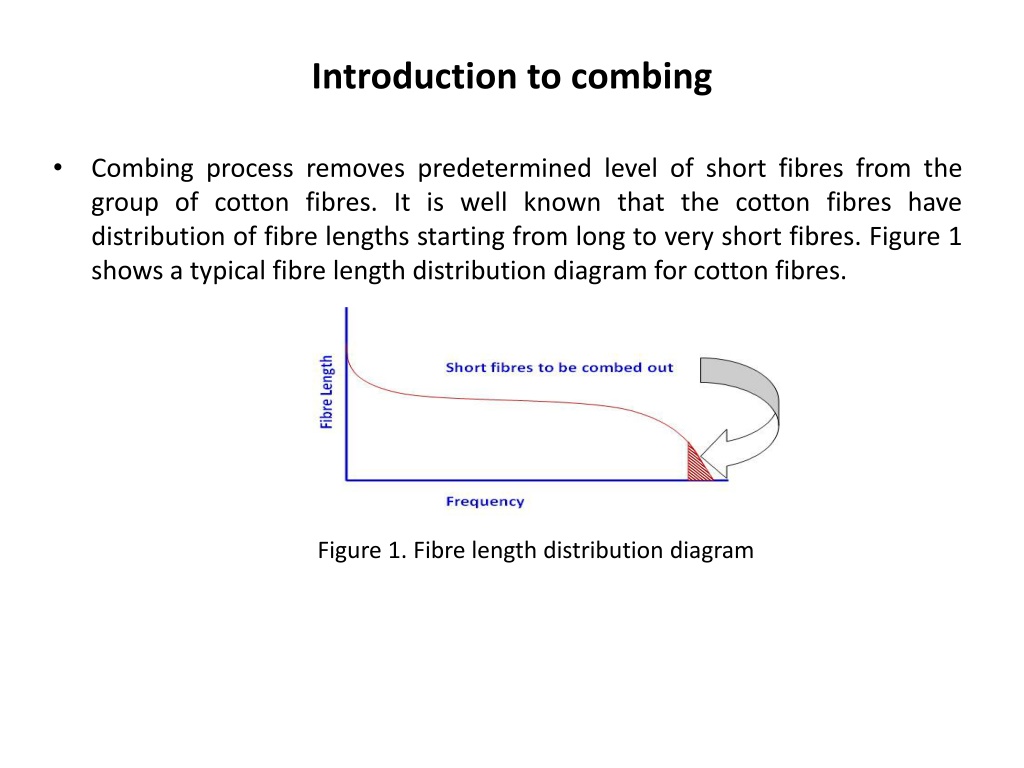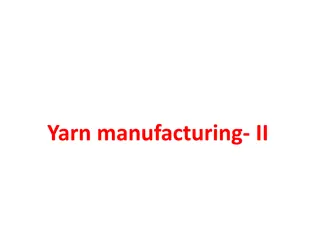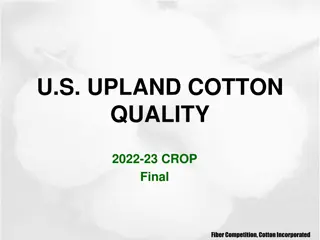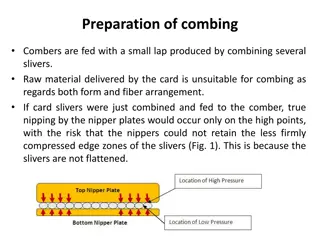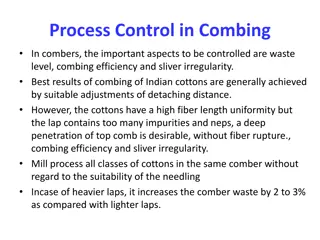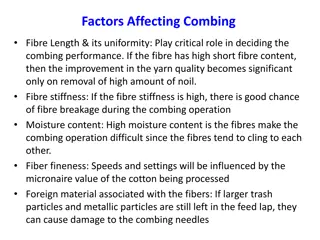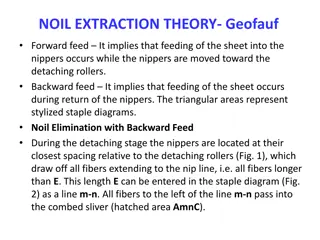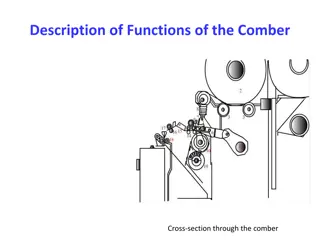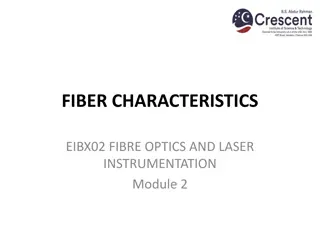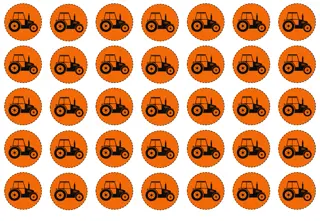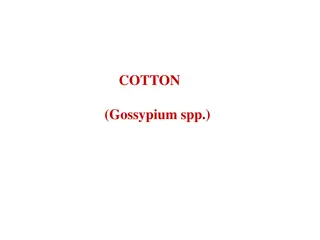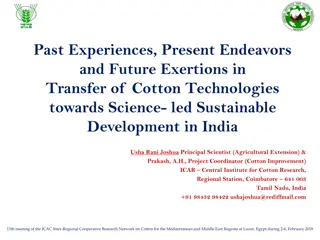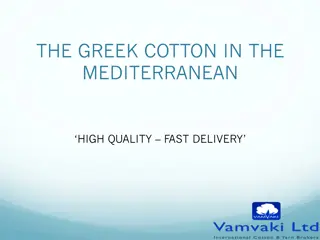Understanding the Combing Process in Cotton Fiber Manufacturing
The combing process in cotton fiber manufacturing involves removing predetermined levels of short fibers to enhance yarn quality by eliminating impurities and improving strength. Combed cotton yarns are softer, stronger, and less likely to fray, making them ideal for sensitive skin, baby garments, and bed linens. However, the process adds complexity and cost to production due to additional machinery and energy requirements.
Download Presentation

Please find below an Image/Link to download the presentation.
The content on the website is provided AS IS for your information and personal use only. It may not be sold, licensed, or shared on other websites without obtaining consent from the author. Download presentation by click this link. If you encounter any issues during the download, it is possible that the publisher has removed the file from their server.
E N D
Presentation Transcript
Introduction to combing Combing process removes predetermined level of short fibres from the group of cotton fibres. It is well known that the cotton fibres have distribution of fibre lengths starting from long to very short fibres. Figure 1 shows a typical fibre length distribution diagram for cotton fibres. Figure 1. Fibre length distribution diagram
The short fibres, shorter than 12 mm do not contribute to the strength of the yarn, but in turn they only increase the hairiness of the yarn and adversely affect the appearance and other good properties of the yarns and the fabrics made out of them. In the staple fibre yarn manufacturing process, only the trash particles, foreign matters and very short fibres are removed in the blow room and carding operations. In these processes, it is not possible to remove fibres which are shorter than a predetermined length, which can increase the average fibre length. In the combing operation, fibres shorter than length of fibres or certain fixed percentage of short fibres are removed. Since the shorter cotton fibres are generally coarser, removing the shorter fibres leaves behind fibres which are relatively finer. Hence, fabric made from combed cotton fibres has a very soft touch. Combing involves additional processing step and also certain amount of fibres are removed as waste. Hence, combed cotton is more expensive than conventional carded cotton
The texture of combed cotton is softer since it is free from short fibres to stick out of the yarn surface and prickle, and all dirt and impurities have been removed from the yarn. Combed cotton is also stronger since shorter and weaker fibers have been removed through combing operation. The straightened fibers lie together in a more compact manner after combing, making combed cotton yarn less likely to fray and unravel. These aspects make the garments made with combed cotton yarns an excellent choice for garments intended to be worn by babies and the elderly, since it is gentle against the skin. The soft and strong combed cotton yarns are ideal for making bed linens and clothing which will be worn against the skin. If the yarn used in a cotton fabric product is combed cotton, it can usually be clearly identified by its luster. On the other hand one has to keep in mind about the following shortcomings of having an additional combing section in the yarn manufacturing system.
Shortcomings of the Combing Process The combing section is an insertion of mostly three machines into the normal spinning process between card and draw frame. This needs more space with conditioned atmosphere which is becoming more and more expensive. It serves as additional system to improve yarn quality if the carded yarn does not meet requirements. Certainly this process with three additional machines increases the cost of the yarn as it takes more energy and labour to run these machines. The design of the comber itself is not very satisfactory since it works on intermittent processing basis which further increases the cost. The entire mass of the nipper assembly has to be accelerated to the maximum speed and slowed down to zero about 7.5 times a second. Although it is a challenging task, the resulting intermittent processing also entails a loss in productivity.
Operations in combing process Elimination of a precisely predetermined quantity of short fibers. Noil percentage = (Weight of noil produced / Total weight of cotton fed) x 100 Elimination of the remaining impurities Elimination of neps in the fiber material Formation of sliver having maximum possible fibre parallization Combing improves evenness, strength, cleanliness, smoothness and visual appearance It should also be noted that combing increases the parallelization of the fibers, but this is a side-effect which is not always an advantage. The high degree of parallelization might reduce inter-fiber adhesion in the sliver to such an extent that the fibers slide apart, e.g. while being pulled out of the can i.e., sliver breaks or false drafts might be caused.
Types of Combers Rectilinear comber : Works with stationary or oscillating nippers and is mainly used in the short staple spinning. Circular combers: Used in the English worsted process. Rotary comber: Used in the production of Schappe spun yarns Hackling machines: Used in the processing of bast fibers. The short staple spinning industry uses only the rectilinear comber with swinging nippers and stationary detaching rollers which rotate back and forth to carry out the piecing and detaching operations. It was originally developed in 1902 by the Englishman Nasmith and in 1948 by Whitin company. These machines are usually single sided comprising eight heads
Goals of Combing in Different Textile Industries Fine count spinning mills : Medium count spinning mills : Coarse to medium count spinning mills Components involved in Combing http://www.nptel.ac.in/courses/116102038/Flash/combing%20section.jpg
Sequence of operations in a Comber Feed rollers move the lap by 4-6.5 mm Upper nipper plate Z 0 is lowered and the fibers are nipped Combing segment k combs the fiber fringe and Carries away those fibers not held by nippers
Nippers open again and move towards the detaching rollers Detaching rollers rotate backwards and bring back a part of the material
Detaching rollers reverse the direction and draw the clamped fibers out of sheet W. The new fiber (B) fringe is placed over the returned material (V)
Nipper assembly moves back. Top comb is withdrawn and new cycle begins. Combing segment is cleaned by the brush roller The top comb thrusts its single row of needles into the fibe fringe
Feed rollers (S) move lap sheet (W) forward by a small amount (4.3 - 6.7 mm), while nippers (Zo/Zu) are kept open (feed). Upper nipper plate Zo is lowered onto cushion plate (Zu) so that the fibers are clamped between them (nipping). Combing segment (K), mounted on rotating cylinder (Z), sweeps saw- teeth through fiber fringe (B) and carries away anything not held by the nippers (rotary combing). The nippers open again and move toward detaching rollers (A) (nippers forward). Meanwhile detaching rollers (A) have returned part of the previously drawn-off stock (web V) by means of a (partial) reverse rotation, so that the web protrudes from the back of the detaching device (web return). In the course of the forward movement of the nippers, the projecting fiber fringe (B) is placed on the returned web (V) (piecing). The detaching rollers begin to rotate in the forward direction again and draw the clamped fibers out of web (W) held fast by feed rollers (S) (inside the nippers) (detaching).
Before the start of the detaching operation, top comb (F) has thrust its single row of teeth into the fiber fringe. As the fibers are pulled through the teeth of the top comb during detaching, the trailing part of the fringe is combed, thus making up for the inability of the circular combs to reach this part of the fringe (passive combing by the top comb). As the nipper assembly is retracted, the nippers will open for the next feeding step. During that time top comb will withdraw and the system is ready for new combing cycle Contrary to the movements of the other parts, the combing cylinder rotates continuously. During this rotation and at a certain instant the combing segment is brought into the vicinity of a rapidly revolving brush mounted below the combing cylinder. During this processThis the brush removes the imperfections, dust etc., from the combing segment, and ejects them into an extractor that carries the noil away to a collecting filter system. All these demanding processing steps are carried out mechanically on 8 combing heads which are simultaneous process at speed up to 500 times per minute.
